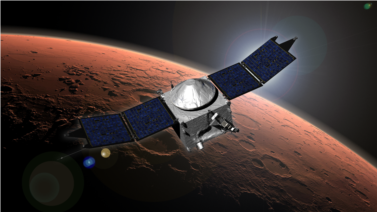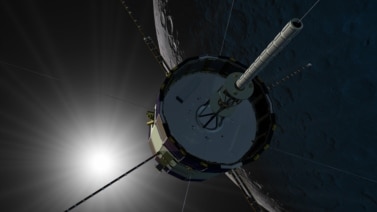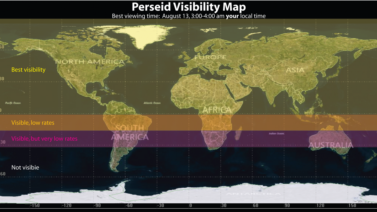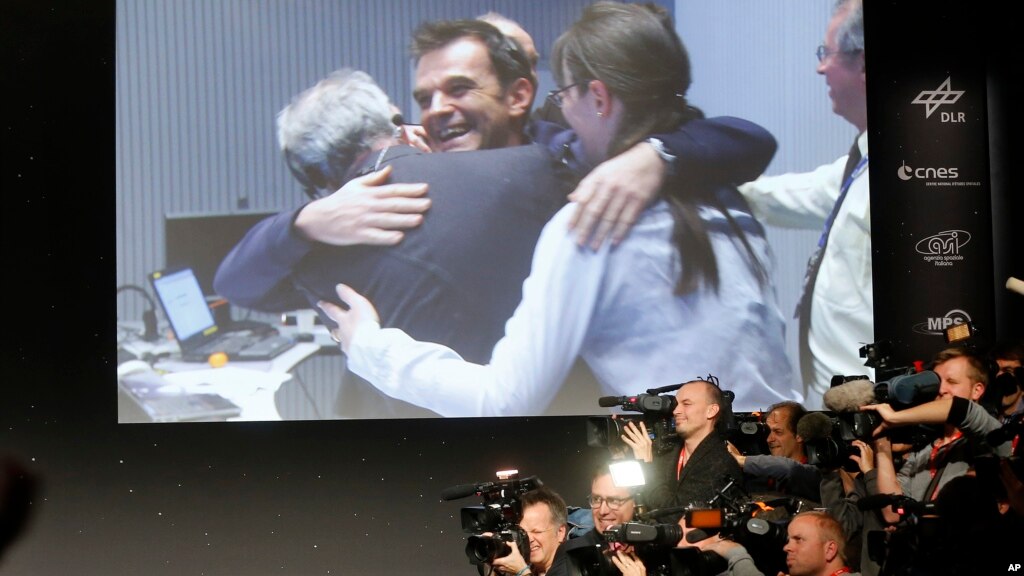
After traveling 10 years and hundreds of millions of kilometers, a small robotic spacecraft has for the first time landed on the surface of a comet, a solar system object made of ice and rock.
The probe launched from the European Space Agency’s main Rosetta spaceship early Wednesday. The spaceship is designed to carefully study the appearance and materials that make up the Comet 67P/Churymov-Gerasimenko.
Scientists worried the probe might not land on solid ground but early reports say the Philae research probe is in good condition.
Stephan Ulamec, of the German Aerospace Center, announced the news. He said the landing equipment and a special device meant to secure the spacecraft to the comet had deployed.
“Philae is talking to us, first things he told us is that the harpoons have been fired, rewound and that the landing gear has been moved inside, so we are sitting on the surface, Philae is talking to us, more data to come.”
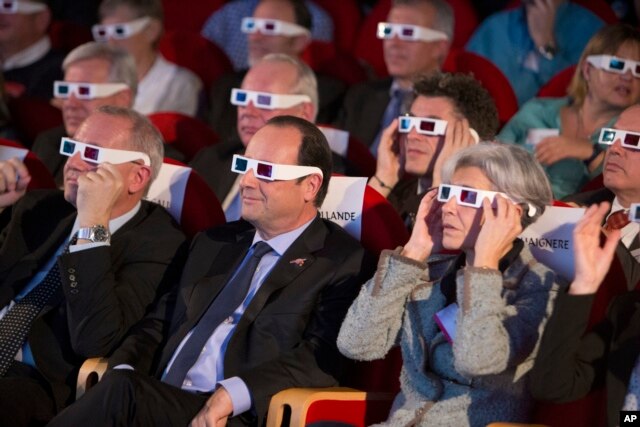
Early on Wednesday, ground controllers at the European Space Agency operations center in Germany confirmed that Philae had separated from the Rosetta ship. The probe then began a tense trip toward the comet and landed on its surface hours later. The attempt to land on the comet was considered risky not only because scientists were unsure of the surface, but because of problems with thrusters used to land the probe.
Scientists and many officials gathered at the European Space Agency’s Operations Center in Darmstadt, Germany. After the landing was announced, there was cheering and applause.
European Space Agency Director Thomas Reiter thanked the many groups who had been involved in the mission.
Jim Green of NASA praised the landing as an important step in space exploration. “Let’s learn about the environment we are in. It’s these steps that will lead us beyond this planet, on to Mars and out into the Solar System.”
Rosetta has been orbiting the Comet 67P/Churymov-Gerasimenko since August. However, the mission started with the spaceship’s launch in March of 2004. The spaceship circled the sun until it was in position to meet with the comet. Information from the European Space Agency shows the spacecraft’s trip has taken it far beyond the orbit Mars.
The comet currently is traveling at a distance of more than 400 million kilometers from Earth. At such a distance, communication between the spacecraft and earth took more than half an hour. Controllers waited and worried before receiving confirmation sent from Philae that it had landed safely.
Now, the probe will begin a series of scientific experiments. Philae will examine the material that makes up the comet looking for organic, or carbon-based material, and inorganic materials. The Rosetta mission cost the European Space Agency, or ESA, $1.7 billion dollars.
The main Rosetta spacecraft will follow Comet 67P for the next year and observe it as it heads toward the sun. However, Rosetta will not approach the sun too closely. Its closest approach to our star is still outside the orbit of Earth.
The Philae probe is the result of a joint effort by scientists and space agencies in many countries from the European Union and the United States. Three experiments on the spaceship come from the U.S. space agency NASA.
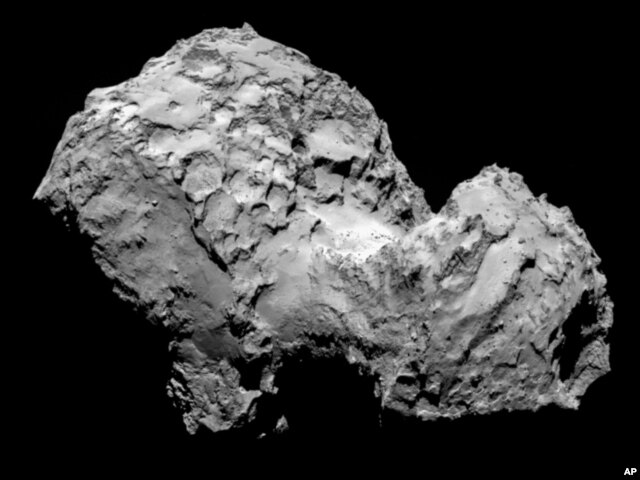
Photos sent back to Earth from Rosetta show Comet 67P's surface as a rough world of rocky formations and ice.
Rosetta is named after the stone that helped unlock the hieroglyphic language of the ancient Egyptians. ESA Director Thomas Reiter has this to say about the mission:
“It’s aim, of course, to unlock the secrets hidden within the icy treasure chest of a 4.6 billion years (old) object, to study its make-up and its history. To search for clues as to our own origins.”
I'm Mario Ritter.
This story was written for VOA by Mario Ritter. Hai Do edited the story.
Words in this Story
Deployed - adj. to move something into a position for action
Probe - n.(science) a device used to examine or study something; a small spacecraft deployed from a larger one that is sent down to a planet, moon or comet
Origins - n. the point where things begin, a starting point
Now it’s your turn to use these Words in This Story.In the comments section, write a sentence using one of these words and we will provide feedback on the use of vocabulary and grammar.
